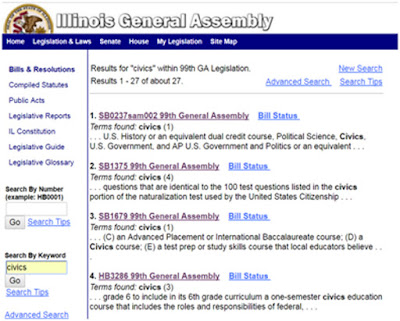Engaging Students in Post-Election Public Policy, Part III: Identifying Who in Government Can Solve the Problem
by Shawn Healy, PhD, Civic Learning Scholar
Last week, we tackled the first two phases of engaging students in the public policy process using America: The Owner’s Manual by Graham and Hand. We’ll continue today with the step that follows: Identifying who in government can solve the problem.
Recall that we previously asked students to identify an issue and research its symptoms and root causes. We later explored various policy alternatives, and now must identify who in government can help resolve the identified problem.
For students, this is often a lesson in federalism. While we tend to focus obsessively on national government, the reality is that most laws that impact us daily exist on the state and local level. It’s therefore likely that many issues students identify reside here.
If the potential policy solution is statutory in nature, attention turns naturally to the legislative body, be it the state legislature or city council. This is often a good opportunity to familiarize students with their local representative or alderman, who upon being contacted, may be willing to carry the bill on their young constituents’ behalf.
Another option is to do a word search for the issue on the legislature’s home page. For example, I searched for “civics” on the Illinois General Assembly’s home page and found a number of bills filed under this subject (see below). Not only will this allow students to explore a number of additional policy alternatives, but also to identify a potential ally for their own solution.
Preceding our push for the civics course requirement, we worked with two Villa Park Democrats, Representative Deb Conroy and Senator Tom Cullerton, on legislation to create a Task Force on Civic Education. The requirement was its Number One recommendation, so Conroy and Cullerton became our natural bill sponsors. They proved fierce advocates for the legislation, ultimately building strong bi-partisan majorities in their respective chambers.
The rest, of course, is history, as Illinois Civic Mission Coalition members proved vigilant advocates for the cause. We continue this story, and the arc of student engagement in the policy making process, on Thursday.


Comments
Post a Comment